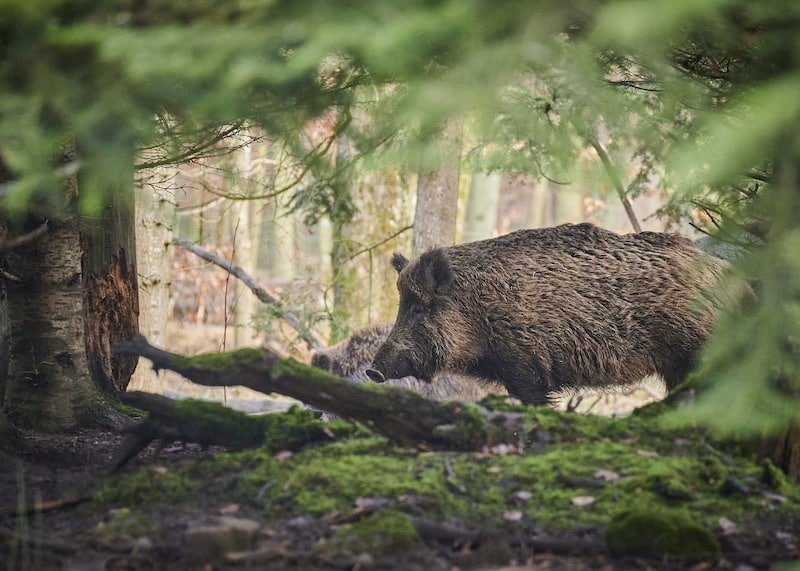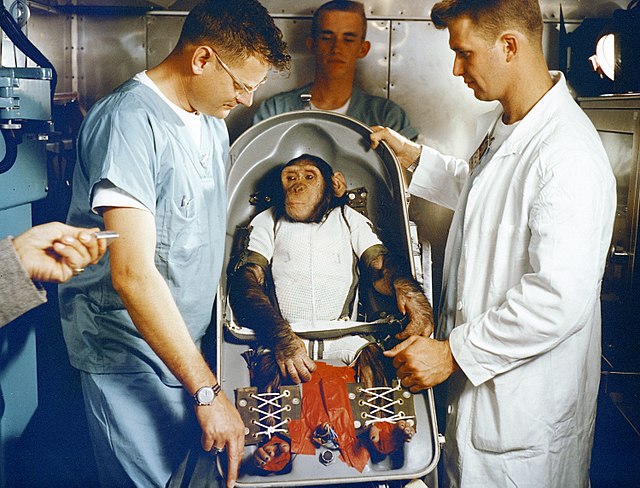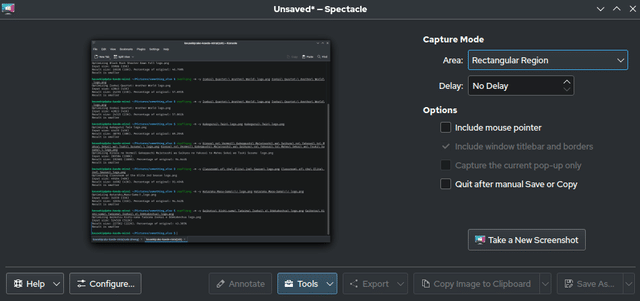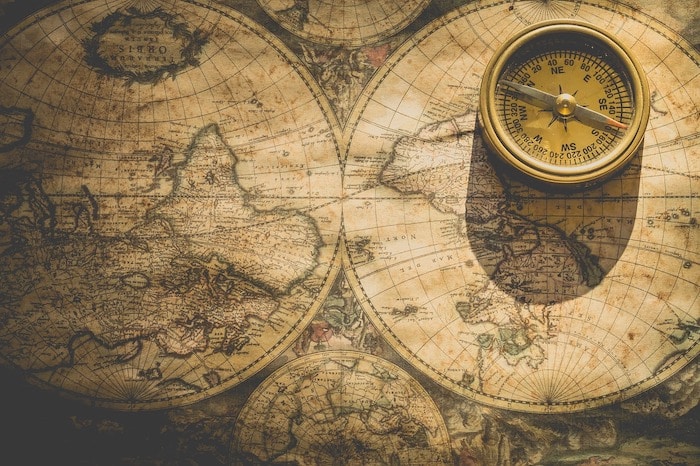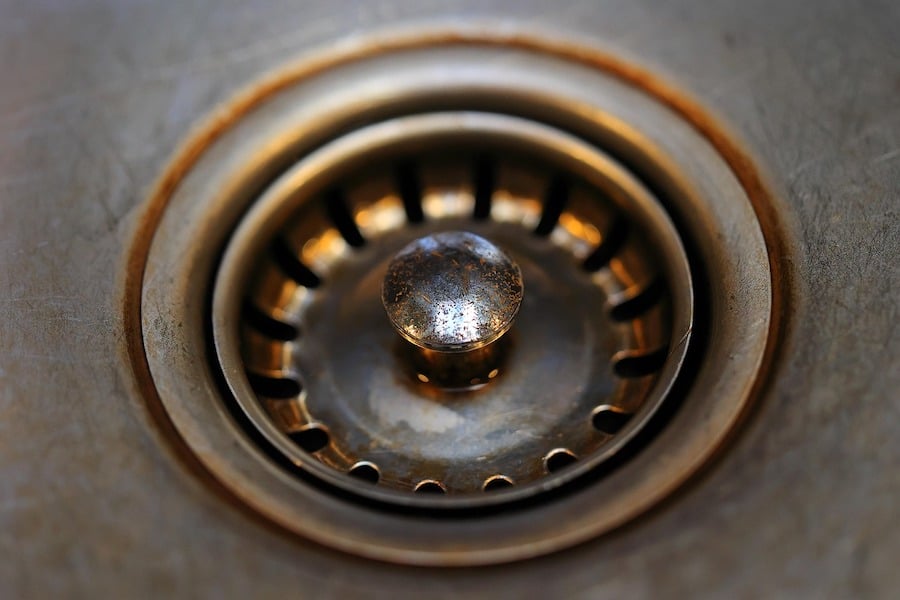The world is wild and filled with deadly animals that can make you rethink your life choices. Some are venomous, some are disease-ridden, and others are terrifying. Today, we’ll take a deep dive into 50 of the most dangerous animals on Earth, exploring their origins, deadly traits, and some jaw-dropping facts that will leave you stunned.
- 1. Box Jellyfish
- 2. Mosquito
- 3. Saltwater Crocodile
- 4. Black Mamba
- 5. Poison Dart Frog
- 6. Cape Buffalo
- 7. Deadly Animals: The Blue-Ringed Octopus
- 8. African Lion
- 9. Stonefish
- 10. Polar Bear
- 11. Tsetse Fly
- 12. Brazilian Wandering Spider
- 13. Asian Giant Hornet
- 14. Hippopotamus
- 15. Inland Taipan
- 16. Africanized Honeybee
- 17. Cone Snail
- 18. Komodo Dragon
- 19. Pufferfish
- 20. Electric Eel
- 21. Cassowary
- 22. African Rock Python
- 23. Fire Ant
- 24. Gila Monster
- 25. Moose
- 26. Irukandji Jellyfish
- 27. Saw-Scaled Viper
- 28. Sydney Funnel-Web Spider
- 29. King Cobra
- 30. Carpet Viper
- 31. African Elephant
- 32. Rhinoceros
- 33. Hyena
- 34. Wolf
- 35. Cougar
- 36. Leopard
- 37. Great White Shark
- 38. Portuguese Man o’ War
- 39. Brown Recluse Spider
- 40. Stingray
- 41. Boomslang
- 42. Gaboon Viper
- 43. Indian Red Scorpion
- 44. Yellow-Bellied Sea Snake
- 45. Banded Krait
- 46. Mulga Snake
- 47. Coastal Taipan
- 48. Wild Boar
- 49. Amazonian Giant Centipede
- 50. Tiger
- Conclusion
1. Box Jellyfish
Origins and Name: The box jellyfish, scientifically known as Chironex fleckeri, is named for its cube-shaped bell. This ancient creature has been floating in the oceans for millions of years, evolving into one of the most efficient killers in the water.
Why It’s Dangerous: This jellyfish’s tentacles are loaded with venom that can cause cardiac arrest, paralysis, and excruciating pain in minutes. Each tentacle has millions of tiny harpoons that inject toxins into its victims. Around 50 people die annually from box jellyfish stings, particularly in the Indo-Pacific.

Crazy Fact: Despite having 24 eyes, scientists still don’t fully understand how the box jellyfish processes visual information. Maybe it’s just too busy being deadly to explain itself.
2. Mosquito
Origins and Name: The word “mosquito” means “little fly” in Spanish; these tiny terrors have been buzzing around for over 100 million years and have been a constant nuisance and deadly threat to humans throughout history.
Why It’s Dangerous: Mosquitoes are the deadliest animals on the planet, responsible for over 700,000 deaths yearly. They spread diseases like malaria, dengue, Zika, and yellow fever, turning a simple bite into a potential death sentence.

Crazy Fact: Only female mosquitoes bite humans. Males are content with sipping flower nectar, proving that the ladies are the real bosses in the mosquito world.
3. Saltwater Crocodile

Origins and Name: The saltwater crocodile, or Crocodylus porosus, is the largest reptile alive. These prehistoric predators have existed since the time of the dinosaurs, and they haven’t lost their edge.
Why It’s Dangerous: With a bite force of 3,700 psi, saltwater crocs can crush bones like twigs. They’re responsible for around 1,000 human deaths annually, often by ambushing their prey and dragging them underwater for a deadly spin.
Crazy Fact: Saltwater crocodiles can swim up to 18 mph (29kph) and launch their bodies out of the water to snatch prey. Imagine a 2,000-pound missile coming at you. Yikes!
4. Black Mamba

Origins and Name: The black mamba (Dendroaspis polylepis) isn’t black. It’s named for the inky interior of its mouth, which it displays when threatened. Native to Africa, this snake is infamous for its speed and aggression.
Why It’s Dangerous: The black mamba’s venom is a potent neurotoxin that can kill a human in under 20 minutes if untreated. Without antivenom, the mortality rate is a chilling 100%.
Crazy Fact: This snake can slither at 12 mph (19.3kph), making it the fastest snake in the world. Good luck outrunning that.
5. Poison Dart Frog

Origins and Name: Poison dart frogs, belonging to the family Dendrobatidae, get their name from indigenous tribes who used their toxic secretions to coat blowdarts. These tiny amphibians are as colorful as they are deadly.
Why It’s Dangerous: Touching a poison dart frog can be fatal. Their skin secretes batrachotoxin, a poison that disrupts nerve function and can stop your heart. One frog carries enough toxin to kill 10 adults.
Crazy Fact: Poison dart frogs aren’t born toxic. They acquire their poison from their diet of ants and mites. It’s like they’re brewing their deadly cocktail.
6. Cape Buffalo

Origins and Name: The Cape buffalo (Syncerus caffer), also known as the African buffalo, is a massive herbivore that roams the savannas of Africa. Despite its plant-based diet, it’s one of the most dangerous animals on the continent.
Why It’s Dangerous: Cape buffaloes are responsible for over 200 human deaths annually. They’re highly unpredictable and will charge, gore, and trample anything they perceive as a threat, including lions.
Crazy Fact: When threatened, Cape buffaloes form a defensive circle around their young, facing outward to protect the vulnerable. It’s like a bovine version of a Spartan shield wall.
7. Deadly Animals: The Blue-Ringed Octopus

Origins and Name: The blue-ringed octopus (Hapalochlaena lunulata) is a small but deadly cephalopod in the Pacific and Indian Oceans. Its vibrant blue rings serve as a warning to potential predators.
Why It’s Dangerous: This octopus carries tetrodotoxin, a venom so potent that it can paralyze and kill a human within minutes. There’s no antivenom, and one octopus has enough venom to kill 26 adults.
Crazy Fact: The blue rings only appear when the octopus feels threatened. It’s like a neon “danger” sign that flashes just before it strikes.
8. African Lion

Origins and Name: Throughout history, the African lion (Panthera leo) has symbolized strength and royalty. Despite being called the “king of the jungle,” lions live in grasslands and savannas.
Why It’s Dangerous: Lions are apex predators with sharp claws and teeth that can crush bones. They’re responsible for around 250 human deaths annually, often in rural areas where humans and lions cross paths.
Crazy Fact: A lion’s roar can be heard up to 5 miles (8 kilometers) away. That’s nature saying, “I’m here, and you should probably stay away.”
9. Stonefish

Origins and Name: The stonefish (Synanceia) is a master of camouflage, blending seamlessly with rocks and coral on the ocean floor. Its name comes from its rock-like appearance.
Why It’s Dangerous: Stepping on a stonefish can be a death sentence. Its dorsal spines deliver venom that causes extreme pain, tissue necrosis, and even heart failure. It’s the most venomous fish in the world.
Crazy Fact: The stonefish is a delicacy in some Asian countries despite its deadly reputation. Eating it requires careful preparation to avoid poisoning. Now that’s what we call living on the edge.
10. Polar Bear

Origins and Name: The polar bear (Ursus maritimus) is the largest land carnivore, perfectly adapted to the harsh Arctic environment. Its scientific name means “maritime bear,” reflecting its dependence on sea ice for hunting.
Why It’s Dangerous: Polar bears are super strong and can kill someone with a single paw swipe. They’re responsible for a few of deaths in the Arctic regions each year.
Crazy Fact: Polar bears are so well-insulated that they’re almost invisible to infrared cameras. It’s like they have built-in stealth technology.
11. Tsetse Fly

Origins and Name: The tsetse fly (Glossina) is a bloodsucking insect native to Africa. Its name comes from the Tswana word tsetse, meaning “fly.”
Why It’s Dangerous: Tsetse flies transmit African sleeping sickness, a disease that can cause coma and death if left untreated. Around 10,000 cases are reported annually, primarily in sub-Saharan Africa.
Crazy Fact: Unlike most insects, tsetse flies give birth to live young instead of laying eggs. It’s like they’re part insect, part mammal.
12. Brazilian Wandering Spider

Origins and Name: The Brazilian wandering spider (Phoneutria), is sometimes called the “banana spider” because it’s found in banana shipments. Its name comes from the Greek word for “murderess.”
Why It’s Dangerous: This spider’s venom is highly neurotoxic and can cause paralysis, breathing problems, and even death. It’s considered the most venomous spider in the world.
Crazy Fact: The Brazilian wandering spider doesn’t build webs. It wanders the forest floor at night, hunting for prey.
13. Asian Giant Hornet

Origins and Name: The Asian giant hornet (Vespa mandarinia), also known as the “murder hornet,” is the largest in the world. Native to East Asia, it’s earned its terrifying nickname for good reason.
Why It’s Dangerous: These hornets have a venomous sting that can cause tissue damage, kidney failure, and even death, especially if someone is stung multiple times. They’re also known to attack honeybee hives, decimating entire colonies in hours.
Crazy Fact: One Asian giant hornet can kill 40 honeybees in a minute. A small group can destroy 30,000 bees in just a few hours.
14. Hippopotamus

Origins and Name: The hippopotamus (Hippopotamus amphibius) comes from the Greek words for “river horse.” Despite their chunky, docile appearance, they’re one of Africa’s most dangerous animals.
Why It’s Dangerous: Hippos are highly territorial and can weigh up to 4,000 pounds. They kill around 500 people annually by charging, biting, and capsizing boats. Their jaws can crush a human or a crocodile in one bite.
Crazy Fact: Hippos can run up to 19 mph (30 kph) on land, faster than most humans. Imagine a tank sprinting at you. Terrifying, right?
15. Inland Taipan

Origins and Name: The inland taipan (Oxyuranus microlepidotus), also called the fierce snake, is native to Australia. It’s considered the most venomous snake in the world.
Why It’s Dangerous: A single bite from an inland taipan contains enough venom to kill 100 adults. Its venom is a cocktail of neurotoxins, hemotoxins, and myotoxins that can cause paralysis and organ failure.
Crazy Fact: Despite its deadly reputation, the inland taipan is shy and rarely encountered by humans. It’s like the introvert of the snake world. Quiet, but deadly.
16. Africanized Honeybee

Origins and Name: Also known as killer bees, Africanized honeybees (Apis mellifera scutellata) are a hybrid of African and European honeybees. They were accidentally released in Brazil in the 1950s and have since spread across the Americas.
Why It’s Dangerous: These bees are highly aggressive and will swarm and sting in large numbers if they feel threatened. Their venom isn’t more toxic than regular bees, but the sheer number of stings can be fatal.
Crazy Fact: Africanized honeybees can chase someone for about a quarter of a mile. They’re like the Terminators of the insect world, relentless and unstoppable.
17. Cone Snail

Origins and Name: Cone snails (Conidae) are marine snails in tropical waters. They’re named after their cone-shaped shells, which come in beautiful patterns and colors.
Why It’s Dangerous: Cone snails have a harpoon-like tooth that delivers venom capable of paralyzing and killing humans. There’s no antivenom, and symptoms can start within minutes.
Crazy Fact: Some cone snail venom contains compounds scientists believe could help fight pain. It’s like they’re deadly but also potentially life-saving.
18. Komodo Dragon

Origins and Name: The Komodo dragon (Varanus komodoensis) is the largest lizard in the world, native to Indonesia. It’s named after the island of Komodo, where it was first discovered.
Why It’s Dangerous: Komodo dragons have sharp teeth, powerful jaws, and venomous saliva that prevents blood clotting. They can take down prey much bigger than themselves, including water buffalo.
Crazy Fact: Komodo dragons can reproduce through parthenogenesis, meaning females can lay fertile eggs without males.
19. Pufferfish

Origins and Name: Pufferfish (Tetraodontidae) got their name for their ability to inflate their bodies when threatened. They’re found in tropical and subtropical oceans worldwide.
Why It’s Dangerous: Pufferfish contain tetrodotoxin, a poison 1,200 times more toxic than cyanide. Just one pufferfish has enough toxin to kill 30 adults.
Crazy Fact: In Japan, pufferfish (fugu) is a delicacy, but only licensed chefs can prepare it. One wrong cut, and it’s game over.
20. Electric Eel

Origins and Name: The electric eel (Electrophorus electricus) isn’t an eel but a type of knifefish. It’s named after its ability to generate electric shocks.
Why It’s Dangerous: Electric eels can deliver shocks of up to 600 volts, enough to stun a human or even cause heart failure. They use these shocks to hunt and defend themselves.
Crazy Fact: Electric eels can leap out of the water to deliver a shock to predators. It’s like they’ve mastered the art of aerial combat.
21. Cassowary

Origins and Name: The cassowary (Casuarius) is a large, flightless bird native to Australia and New Guinea. Its name comes from the Papuan word for “horned head.”
Why It’s Dangerous: Cassowaries have razor-sharp claws that can easily slice through flesh. They’re highly territorial and have been known to attack humans unprovoked.
Crazy Fact: Cassowaries are considered living dinosaurs because of their ancient lineage. They’re like modern-day velociraptors.
22. African Rock Python

Origins and Name: The African rock python (Python sebae) is one of the largest snake species in the world. It’s native to sub-Saharan Africa and is known for its aggressive nature.
Why It’s Dangerous: These pythons are constrictors who can squeeze their prey to death. While attacks on humans are rare, they’re capable of killing and swallowing large animals, including antelopes.
Crazy Fact: African rock pythons go months without eating after a big meal. It’s like they’re the ultimate meal preppers.
23. Fire Ant

Origins and Name: Fire ants (Solenopsis invicta) are named after their painful, burning sting. They’re native to South America but have spread to other parts of the world.
Why It’s Dangerous: Fire ants attack in swarms, delivering multiple stings that can cause allergic reactions, anaphylaxis, and even death in rare cases.
Crazy Fact: Fire ants can form floating rafts during floods by linking their bodies. It’s like they’ve mastered survival engineering.
24. Gila Monster

Origins and Name: The Gila monster (Heloderma suspectum) is one of only two venomous lizards in the world. It’s named after the Gila River basin in the southwestern United States.
Why It’s Dangerous: Gila monsters have venomous bites that cause intense pain, swelling, and nausea. While rarely fatal, their bites are unpleasant.
Crazy Fact: Gila monsters store fat in their tails, allowing them to survive for months without food. It’s like they’re carrying their snack pack.
25. Moose

Origins and Name: The moose (Alces alces) is the largest member of the deer family. Its name comes from the Algonquin word meaning “twig eater.”
Why It’s Dangerous: Moose are unpredictable and weigh up to 1,500 pounds. They’re known to charge at cars, humans, and even trains if they feel threatened.
Crazy Fact: Moose can dive up to 20 feet underwater to feed on aquatic plants. It’s like they’re part deer, part submarine.
26. Irukandji Jellyfish

Origins & Name: The Irukandji jellyfish (Carukia barnesi) is named after the indigenous Irukandji people of Australia. It’s about the size of a fingernail but packs a punch that’ll make you regret stepping into the ocean.
Why It’s Dangerous: Its venom causes Irukandji syndrome, which includes vomiting, cramps, and a feeling of impending doom. Some victims beg for death because the pain is so unbearable. Only 1-2 people die yearly, but hundreds get stung.
Crazy Fact: This jellyfish’s venom is 100 times more potent than a cobra’s. And guess what? It can shoot venom from its tentacles and bell.
27. Saw-Scaled Viper

Origins & Name: The saw-scaled viper (Echis carinatus) gets its name from the raspy sound it makes by rubbing its scales together, a creepy warning that says, “Back off, buddy.” It’s found in Africa, the Middle East, and Asia.
Why It’s Dangerous: This snake’s bite causes internal bleeding, kidney failure, and tissue death. It’s responsible for more human deaths than any other snake, killing up to 5,000 people annually.
Crazy Fact: Saw-scaled vipers are so aggressive they’ll strike multiple times in one attack. They’re the Karens of the snake world, never satisfied with just one complaint.
28. Sydney Funnel-Web Spider

Origins & Name: Native to Australia (shocker), the Sydney funnel-web (Atrax robustus) is a hairy nightmare that lives in burrows with silk tripwires. It’s the Tony Soprano of spiders.
Why It’s Dangerous: Its venom attacks the nervous system and can kill a human in 15 minutes. Thankfully, antivenom exists, but no one wants to test it.
Crazy Fact: Male funnel-webs are deadlier than females. They wander around during mating season, cranky and full of venom. It’s like a spider mid-life crisis.
29. King Cobra

Origins & Name: The king cobra (Ophiophagus hannah) is the world’s longest venomous snake. Its scientific name means “snake-eater” because it dines on other snakes. Fancy!
Why It’s Dangerous: One bite delivers enough venom to kill an elephant or 20 humans. It’s fast and can stand up to look you in the eye. Nope.
Crazy Fact: King cobras build nests for their eggs, which is rare for snakes. They’re the overprotective parents of the reptile world.
30. Carpet Viper

Origins & Name: The carpet viper (Echis pyramidum) lurks in North Africa and the Middle East. It’s named after its patterned scales, which blend into desert sands like a deadly rug.
Why It’s Dangerous: Its venom destroys blood cells and tissues, leading to amputations or death. It’s blamed for thousands of deaths yearly, often in rural areas.
Crazy Fact: Carpet vipers are so tough they thrive in active war zones. Even bombs won’t stop these guys.
31. African Elephant

Origins & Name: The African Elephant (Loxodonta africana) is the largest land animal. They’re majestic, intelligent, and sometimes homicidal.
Why It’s Dangerous: Elephants kill about 500 people yearly, often by trampling or goring. Males in musth (a hormonal rage) are unpredictable.
Crazy Fact: Elephants mourn their dead and visit gravesites. They’re like giant, emotional bulldozers.
32. Rhinoceros

Origins & Name: Rhinos (Rhinocerotidae) get their name from Greek words meaning “nose horn.” They’ve been around for 50 million years and still haven’t learned patience.
Why It’s Dangerous: Rhinos charge at speeds of 35 mph and use their horns like battering rams. They kill dozens of humans yearly.
Crazy Fact: A rhino’s horn comprises keratin, the same as fingernails.
33. Hyena

Origins & Name: Hyenas (Hyaenidae) are not dogs or cats. They’re their own weird family. Their name comes from the Greek word for “pig,” which is just rude.
Why It’s Dangerous: Hyenas have bone-crushing jaws and hunt in packs. They’ve been known to attack humans, especially in areas where food is scarce.
Crazy Fact: Female hyenas have pseudo-penises (elongated clitorises) and dominate the clan. Think about that for a second.
34. Wolf

Origins & Name: Wolves (Canis lupus) have haunted human nightmares for millennia. Their name comes from the Old English word wulf.
Why It’s Dangerous: Wolf attacks on humans are rare but brutal. Pack hunters can take down moose or unlucky hikers.
Crazy Fact: Wolves can howl to communicate up to 10 miles away. It’s like a creepy group chat you can’t leave.
35. Cougar

Origins & Name: The cougar (Puma concolor), aka mountain lion, has more nicknames than a mob informant. Found in the Americas, it’s a stealthy, solo hunter.
Why It’s Dangerous: Cougars ambush prey by leaping 15 feet in the air. They rarely attack humans, but when they do, it’s usually fatal.
Crazy Fact: Cougars can’t roar. They scream like a human woman. Imagine hiking and hearing that.
36. Leopard

Origins & Name: Leopards (Panthera pardus) are the ninjas of big cats. Their name comes from the Greek word pardos, meaning spotted.
Why It’s Dangerous: Leopards drag prey into trees to eat in peace. They’ve been known to attack humans, especially in India.
Crazy Fact: Leopards are stronger than gorillas pound-for-pound. They could bench-press you while plotting your demise.
37. Great White Shark

Origins & Name: The great white (Carcharodon carcharias) has ruled oceans for 11 million years. Its name means “ragged tooth,” which undersells its terror.
Why It’s Dangerous: Great whites have 300 serrated teeth and bite with up to 2,000 psi of force. They’re responsible for the most fatal shark attacks.
Crazy Fact: Great whites can detect a drop of blood in 25 gallons of water. They’re like aquatic bloodhounds with a taste for drama.
38. Portuguese Man o’ War

Origins & Name: The Portuguese man o’ war (Physalia physalis) isn’t a jellyfish but a colony of organisms working together. It’s named after 18th-century warships.
Why It’s Dangerous: Its tentacles deliver venomous stings that cause paralysis, heart failure, and agony. Even dead ones on beaches can sting you.
Crazy Fact: The man o’ war’s float can deflate and reinflate like a biological pool toy. A deadly one.
39. Brown Recluse Spider

Origins & Name: The brown recluse (Loxosceles reclusa) hides in dark corners of the U.S. Its name means “slanted leg,” which sounds harmless. It’s not.
Why It’s Dangerous: Its venom destroys tissue, creating necrotic wounds that can take months to heal. Bites are rare but gruesome.
Crazy Fact: Brown recluses are violinists. They have a fiddle-shaped mark on their backs.
40. Stingray

Origins & Name: Stingrays (Dasyatidae) glide through oceans like flattened pancakes. Their name comes from the Old English stingan (to stab).
Why It’s Dangerous: Stingray barbs can pierce hearts (RIP Steve Irwin). Their venom causes pain, swelling, and in rare cases, death.
Crazy Fact: Stingrays are cousins of sharks. Think of them as the ocean’s stealth bombers with a toxic surprise.
41. Boomslang

Origins & Name: The boomslang (Dispholidus typus) is a tree-dwelling African snake. Its name means “tree snake” in Dutch, but “nightmare fuel” would’ve been more accurate.
Why It’s Dangerous: Its hemotoxic venom destroys red blood cells, causing victims to bleed from their eyes, gums, and organs. Without antivenom, you’re toast.
Crazy Fact: Boomslangs can open their jaws 170 degrees, wider than a horror movie monster. They swallow birds whole like they’re a snack.
42. Gaboon Viper

Origins & Name: The Gaboon viper (Bitis gabonica) hails from African rainforests. It’s named after the Gabon region and has the longest fangs of any snake (2 inches!).
Why It’s Dangerous: This viper’s venom is a cocktail of toxins that cause paralysis, shock, and tissue death. Bites are rare but often fatal without treatment.
Crazy Fact: Gaboon vipers are ambush predators. They’ll sit motionless, waiting for prey. Patience is a virtue if you’re a murder noodle.
43. Indian Red Scorpion

Origins & Name: The Indian red scorpion (Hottentotta tamulus) is found in India, Nepal, and Pakistan. Its name comes from its fiery red claws and tail.
Why It’s Dangerous: Its venom attacks the nervous system, causing heart failure, pulmonary edema, and death. It’s responsible for most scorpion-related fatalities in South Asia.
Crazy Fact: These scorpions glow under UV light. Perfect for rave parties, if you’re into dancing with death.
44. Yellow-Bellied Sea Snake

Origins & Name: The yellow-bellied sea snake (Hydrophis platurus) lives in tropical oceans. It’s named after its belly, which is yellow. Zero creativity points here.
Why It’s Dangerous: Its venom is 10 times more toxic than a cobra’s. Luckily, it’s shy and rarely bites humans, but you’re in trouble if it does.
Crazy Fact: This snake can drink seawater and expel salt through its tongue.
45. Banded Krait

Origins & Name: The banded krait (Bungarus fasciatus) is a striped snake from South Asia. Its name comes from its black-and-yellow bands, like nature’s caution tape.
Why It’s Dangerous: Its venom paralyzes muscles, including the diaphragm, leading to suffocation. Even a tiny dose can kill a human in hours.
Crazy Fact: Kraits are nocturnal and often bite people who accidentally roll onto them while sleeping. Talk about a rude awakening.
46. Mulga Snake

Origins & Name: The mulga snake (Pseudechis australis), aka king brown snake, is Australia’s second-longest venomous snake.
Why It’s Dangerous: Its venom attacks muscles, kidneys, and blood cells. One bite delivers enough venom to kill a human 10 times over.
Crazy Fact: Mulga snakes are immune to the venom of other Aussie snakes. They’re the ultimate “I don’t play by your rules” reptile.
47. Coastal Taipan

Origins & Name: The coastal taipan (Oxyuranus scutellatus) is Australia’s deadliest snake. It’s named after its love of coastal regions, and ruining beach days.
Why It’s Dangerous: One bite has enough venom to kill 56 adults. It strikes with lightning speed and always delivers multiple doses.
Crazy Fact: Coastal taipans are so shy that scientists didn’t capture a live one until 1956. They’re introverts with a side of murder.
48. Wild Boar

Origins & Name: Wild boars (Sus scrofa) are the OG pigs of Europe and Asia. Their name means “untamed rage on four legs.”
Why It’s Dangerous: Boars charge at 25 mph, goring humans with dagger-like tusks. They kill dozens yearly, especially during hunts gone wrong.
Crazy Fact: Wild boars can hybridize with domestic pigs, creating “super pigs” that are bigger, meaner, and still obsessed with mud baths.
49. Amazonian Giant Centipede

Origins & Name: The Amazonian giant centipede (Scolopendra gigantea) is a nightmare arthropod from South America. It’s the size of a ruler and hates you.
Why It’s Dangerous: Its venomous bite causes extreme pain, fever, and necrosis. It’s been known to hunt bats, mice, and even small birds.
Crazy Fact: This centipede can climb cave ceilings, snatch bats mid-flight, and eat them alive. It’s the Jason Voorhees of the insect world.
50. Tiger

Origins & Name: Tigers (Panthera tigris) are the largest big cats native to Asia. Their name comes from the Persian word tigris, meaning “arrow.”
Why It’s Dangerous: Tigers kill about 50 humans yearly in India alone. They’re stealthy ambush predators with enough strength to drag a buffalo.
Crazy Fact: A tiger’s roar can paralyze prey with fear. It’s like a sonic weapon wrapped in stripes.
Conclusion
We hope you enjoyed learning about 50 of the deadliest animals that call this planet home. Don’t forget to leave us a comment and share. You can also check out our Hippo Facts or search our Facts Database.

